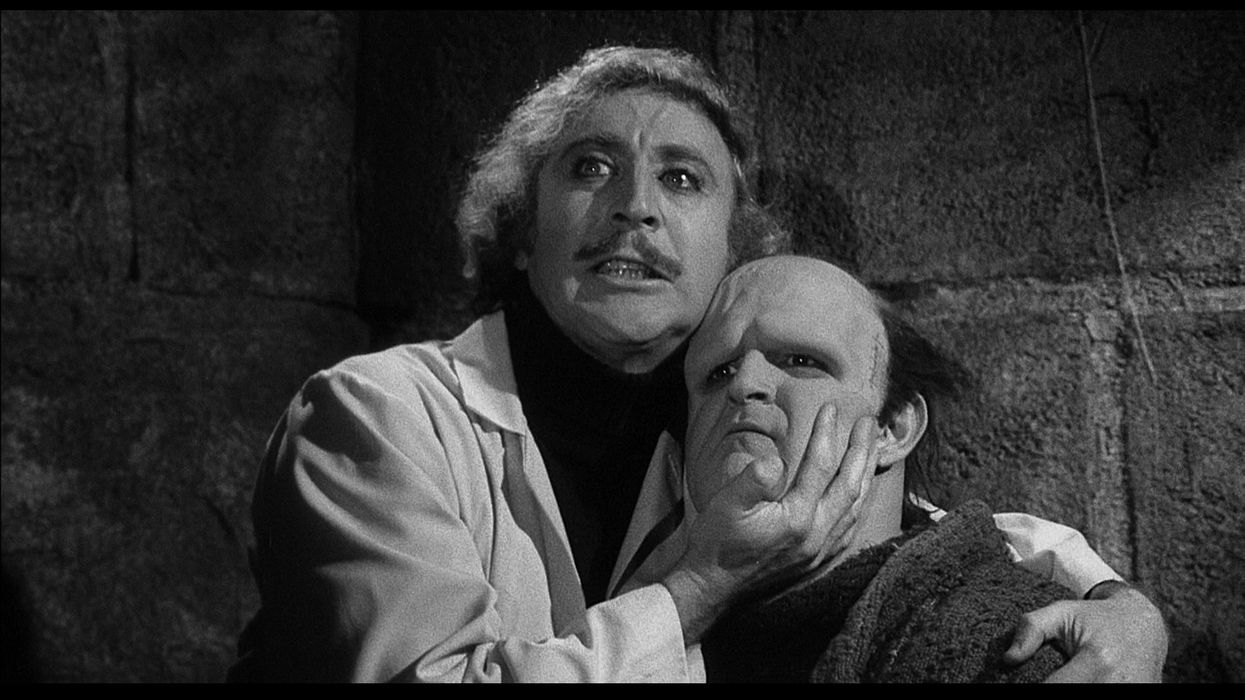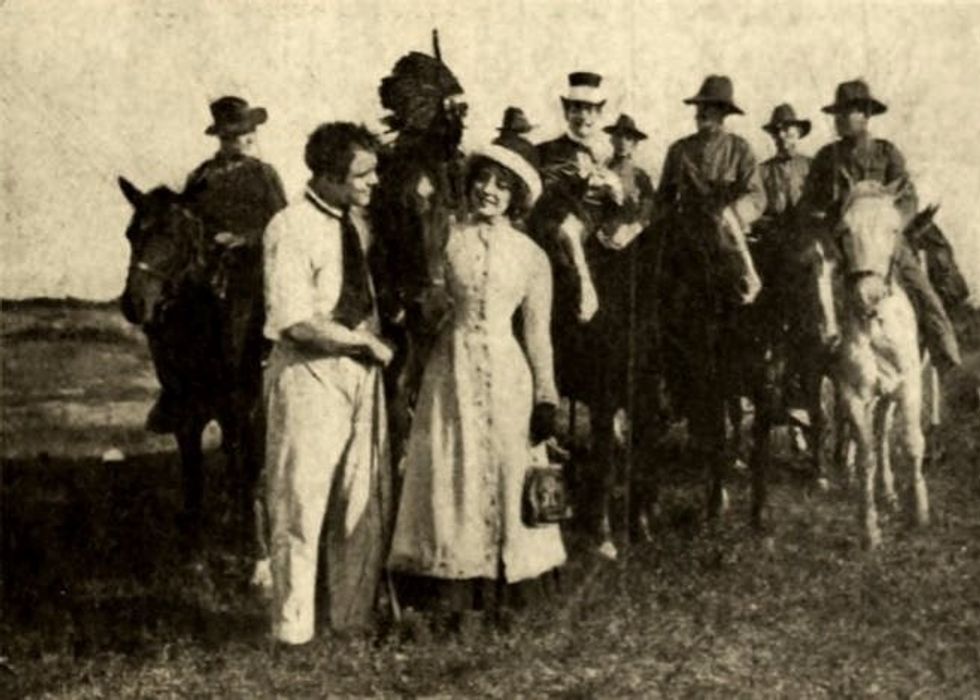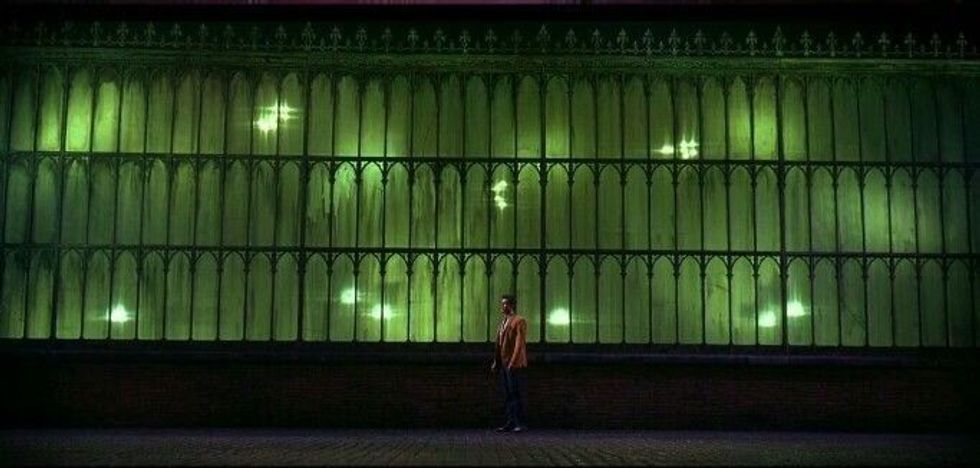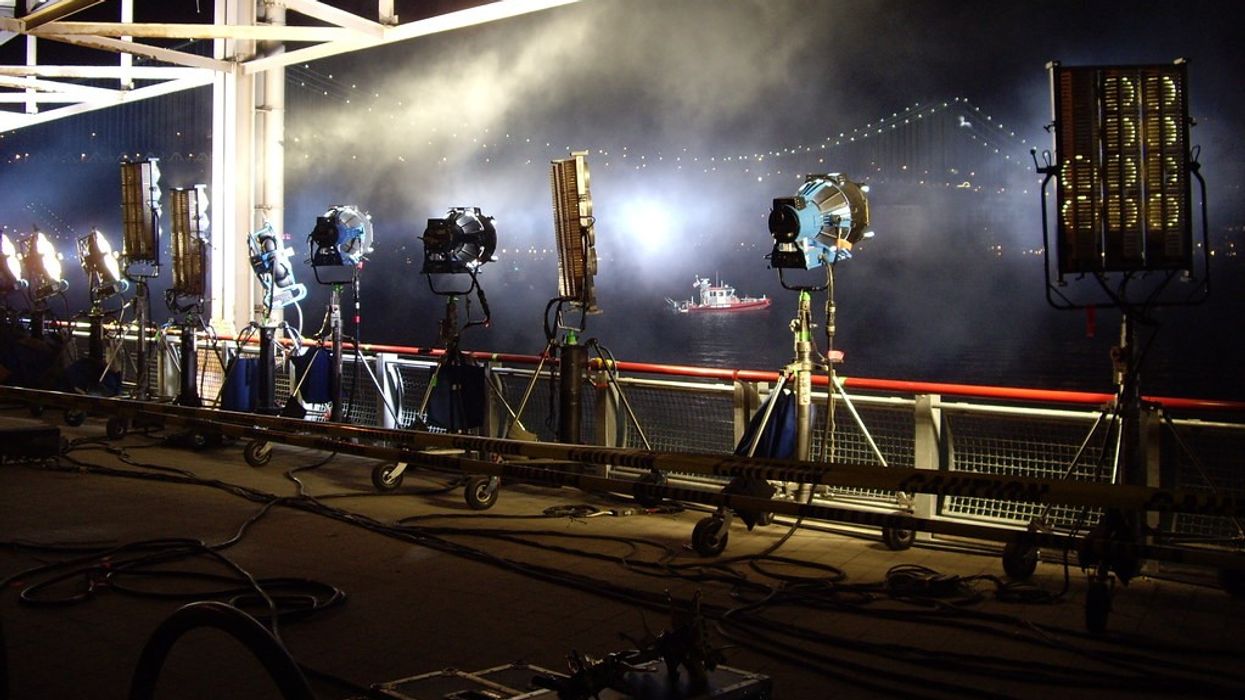Dun, Dun, DUUUN! Where Did This Dramatic Sound Come From?
Can you hear it? Those three notes evoke suspense, horror, and—sometimes—comedy.

It’s a sound you’ve been familiar with since you’ve been able to mimic sounds. It’s the three-beat musical phrase that creates suspense as the big reveal slowly approaches in a shadowy form, building the tension with a dun, then another dun, ending with an erupting duuun!
The dramatic "dun, dun, duuun" has appeared on screen in everything from Despicable Me 2 to Young Frankenstein to The IT Crowd. You probably know the sound best from the video of a melodramatic prairie dog quickly turning as the three beats play. The YouTube video currently sits at 43.5 million views and is a solid piece of meme history.
Dun, Dun, DUUUN!
While we all know the sound and immediately know how to react, does anyone know where it came from?
Strangely enough, Google doesn’t even know the origins of the sound, but The Guardianmight have discovered the source.
These three duns are known as a sting, a brief bit of music that media producers can use to break up action or punctuate a theatrical moment. The duns were at one time purposefully used to invoke frights, thrills, and chills during suspenseful moments, but the strings have now been reduced to a joke to parody the dramas of the olden days.
According to Richard Hand, a media professor at the University of East Anglia and author of Terror on Air!Horror Radio in America, 1931-1952, “One of the challenges of radio—and it’s the same now as it was 100 years ago—is how do you hook the listener?”
Orchestral strings, clock chimes, claps of thunder, and whistling wind were sound effects used to grab the audience’s attention in the early days of radio while immediately establishing a tone. Before the creation of sound libraries, most stings were performed live.
One of the great American horror radio shows, Suspense, was filled with sound effects and dramatic stings. Three minutes into the first episode, a three-beat sting vibrates into the ether as a man discovers his wife is potentially a murderer.
The dun, dun, duuun could have been a cliche long before the arrival of radio dramas. Patrick Feaster, an expert in the preservation of early sound media and co-founder of the First Sounds Initiative, doesn’t know when or where the three duns came from, but he points out that there are stings that work in a similar way that appeared in the 1912 melodrama parody, Desperate Desmond.

In a recording of the vaudeville sketch, Fred Duprez mocks melodramas by telling a story and placing sounds that contradict the action. Though the strings heard in this sketch are single duns, Feaster says, “It seems stinger chords must have been entrenched enough in a melodrama by 1912 to invite parody.”
Films like Disney’s Fantasia used the three duns for dramatic effect.
In the 1940s film, Disney’s recording of Stravinsky’s 1913 Rite of Spring emphasized two duns and a lingering duuun at the end of a dinosaur battle (although the composer’s original features a similar three beats, they’re not as pronounced or as recognizable as the sound we know today).
If you’ve heard the dun, dun, duuun vibrating out of your TV, then it is likely that the sting came from one specific source. Composer Dick Walter was asked by KPM Music to produce four vinyl albums of musical phrases known as The Editor’s Companion. With an orchestral lineup of 35 to 40 people, Walter recorded hundreds of tracks over 18 months.
In these recordings, you can find a four-second, three-beat sting called "Shock Horror (A)."
Walter explains that for centuries, composers have used a particular musical interval to denote tension calledDiabolus in musica, translated to “the devil’s interval.”
The Diabolus in musica is a dissonant combination of tones that unnerves the listener because it is unresolved and left ambiguous. The tritone has historically been considered an important sound device used in horror film scores to bring the audience along an unsettling journey and to emulate and embody a monster.
You can hear the tritone in the opening two notes of The Simpsonstheme song, as well as at the beginning of "Maria"from West Side Story. The tritone creates tension as you wait for the next note to resolve the melody. But it doesn't.
A perfect example of this unsatisfied feeling is the opening notes of Stanley Kubrick’sThe Shining.

When Walter was charged with creating horror strings for The Editor’s Companion, he saw that the obvious thing to do for Shock Horror (A) used the tritone, but “an extremely abbreviated version, about as short as you can get.”
Walter’s horror sting has become almost as famous as Hollywood's other favorite sound effects, showing up in cartoons, commercials, TV comedies, and more. While some producers will create their own versions, Walter’s sting is irreplaceable.
The next time you hear it, here is a good chance that you are hearing Walter’s Horror Shock (A) humming through the air.
Do you have a favorite example of the famous three-beat sound? Let us know what it is in the comments!
Source: The Guardian











